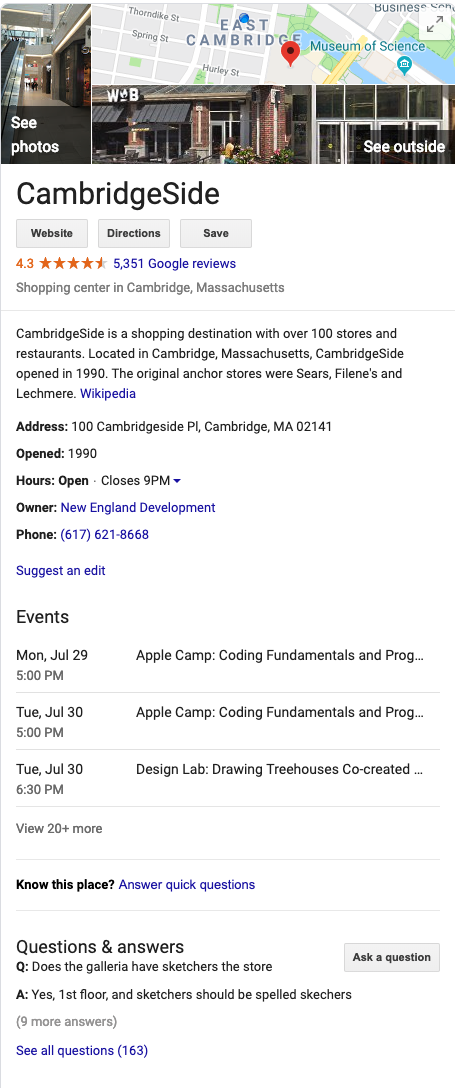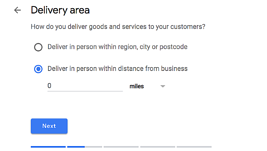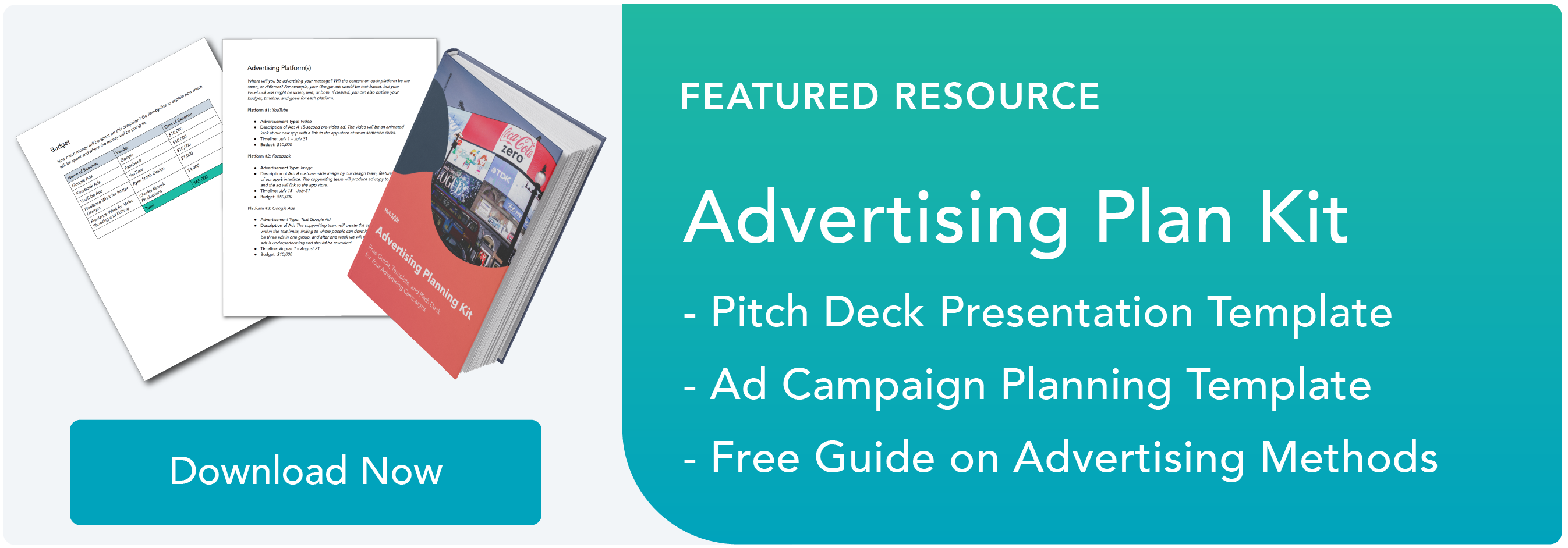How to Get Free Advertising
- Use Google My Business to optimize for local search.
- Check out Yext.
- Write guest posts for other blogs.
- Answer Quora questions.
- Publish content on LinkedIn.
- Offer to do interviews on other business’ podcasts.
- Promote your website on your email signature.
- Send email newsletters.
- Network at in-person events.
- Speak at an event.
- Do a free product giveaway or contest.
- Put up brochures or flyers.
- Create YouTube videos.
- Take advantage of your partnerships.
- Post on social media.
- Experiment with photo and video platforms.
- Encourage happy customers to give online reviews.
1. Use Google My Business to optimize for local search.
One of the most powerful free ways to advertise your business is through Google My Business, which enables companies to manage their presence on Google Search and Google Maps. The tool can bolster your rankings in local search results.
Ranking high in local search shows you’re a legitimate and relevant company: you wouldn’t rank #1 in Google for “pizza places near me” if you’d closed down six months ago. Plus, if you rank high in local search, more consumers will choose your business over a competitor’s. In today’s fast-paced world, convenience is key.
Click here or scroll to the bottom of this post to learn how to advertise on Google for free and find out more about this process.
2. Check out Yext
The more places your business is listed online, the better your chances of showing up in search results, and the easier it is for potential customers to find you. To ensure great local SEO, the details of your listings on every website and online directory need to match up.
For instance, if your website lists your company’s new phone number, but Yelp lists your old one, this inconsistency could hurt your SEO. Yext scans the web to find every place your business is listed, so you can tweak your listings to guarantee accuracy.
3. Write guest posts for other blogs
There are a few major advantages to guest posting for a well-established blog. You can benefit from connecting to that blog’s audience, and you can also start establishing yourself as a thought leader in your industry.
Since guest posting on a popular blog allows you access to an established audience and high domain authority, this practice can sometimes be more beneficial than posting to your own blog. Plus, you can link back to your own website from your article, giving you an inbound link that boosts your domain authority and can increase your own website’s ranking in search engines.
4. Answer Quora questions.
Writing content for Quora can expose your business to a large audience: TechCrunch reported that some of Quora’s active contributors receive more than 30,000 monthly views.
Besides the large built-in audience, your business can answer direct questions from prospective customers. This lets you interact with high-quality potential leads and establish yourself as an expert in the subjects that matter most in your industry.
5. Publish content on LinkedIn.
LinkedIn is an platform to connect with professionals, which is why it’s also a great place to share business-related content. LinkedIn’s blogging platform lets you demonstrate your expertise within your industry.
Your connections and other LinkedIn members will engage with your posts and share them, doing the free promotion for you. With almost half of all social media traffic coming to B2B company sites from LinkedIn, it’s a missed opportunity if you don’t publish and promote content on LinkedIn.
6. Offer to do interviews on other business’ podcasts.
To figure out which platforms your team should priortize, it’s important to diversify your promotion platforms to discover where your audience is already consuming content. Some of your audience might prefer listening to podcasts over reading articles. To reach those people, contact a few businesses with podcasts and pitch interview ideas.
7. Promote your website on your email signature.
With all the emails you send every day, it’s a shame if you aren’t taking advantage of the promotional potential of your email signature. Your email signature can also be unexpected property to promote a sale, contest, event, or even a new blog post. Add a link to your business’ website on your Facebook, Twitter, and Instagram profiles, as well.
8. Send email newsletters.
An email newsletter can be a useful vehicle to promote content, share business-related news, and build deeper relationships with both potential and existing customers. There are plenty of free tools out there that assist you in designing, sending, and optimizing your newsletter.
With the right time investment, an email newsletter can be the perfect place to share quality content with leads and potential consumers, establishing your brand as helpful and informative.
9. Network at in-person events.
Connecting with fellow professionals at industry networking events is a great opportunity to meet potential consumers in a place where they are eager to discuss your business. The niche topics of networking events ensures you’re meeting high-qualified leads. For example, a “Best Technology Startups of 2018” event will primarily be filled with participants who are interested in technology and startups.
Particularly for small businesses looking to make their first connections, networking is a chance to get your name out there, meet potential partners, and find opportunities for growth. Plus, it’ll keep you up-to-date on trends in your industry.
10. Speak at an event.
Similar to networking, speaking at an event about a topic related to your industry is another way to exhibit your expertise. Giving a thought-provoking and powerful speech will draw attention to you and, by association, your business, which can increase brand awareness and prove your business is qualified to tackle consumer’s challenges.
To start, brainstorm different topics and volunteer at various upcoming networking events and trade association conventions. If you’re afraid of public speaking (don’t worry, a lot of us are), you could enroll in a local Toastmasters chapter to improve your game.
11. Do a free product giveaway or contest
A product giveaway or contest is an easy way to incentivize new viewers to check out and subscribe to your social media channels or website. Plus, handing out inexpensive branded products like t-shirts or mugs is a good way to spread your brand name. Word of mouth is alive and well — and a little swag can go a long way.
12. Put up brochures or flyers.
Putting up brochures or flyers in local libraries, coffee shops, and businesses is a unique way to market to offline locations where people spend a good deal of their time.
You can create free brochures and flyers on PowerPoint. Depending on your industry, it might even help you reach an ideal clientele: if you’re a physical therapist, for example, perhaps you could hand out brochures to local gyms or nearby hospitals.
13. Create YouTube videos.
YouTube has more than a billion active users, which accounts for almost one-third of everyone on the internet. Plus, 59% of executives — i.e. decision makers — go to videos before written content.
Creating engaging and informative YouTube videos is one of the most efficient ways to sell your brand. If done right, your YouTube videos will entertain viewers enough to seek out your website.
14. Take advantage of your partnerships.
Partnerships are an opportunity to offer supplementary services that you don’t provide. For example, a web design company and a copywriting agency might choose to partner together, so when a client requires written content for her web pages, the web design company can offer copywriting services from their partner.
This increases consumer satisfaction, and it also provides exceptional advertising opportunities. When your partner’s consumers need your services, your partner will point them in your direction.
15. Post on social media.
Nowadays, social media is crucial to most marketing strategies. Luckily, most types of social media platforms and posts are free — even to businesses. While many platforms will let you advertise, you can still post or tweet for no cost if you’re on a budget.
Pick the platforms that best suit your audience. Then, post links, photos, videos, or text posts about your company, product launches, or any other occurrence that you’d like to promote. Facebook, Twitter, and LinkedIn are a suitable place to start for most businesses. They all offer a way to share video, text, photo, and link-based posts and have large user bases. To learn more about other forms of social media, check out this post.
16. Experiment with photo and video platforms.
While Facebook, Twitter, and LinkedIn could be great platforms to start on, expanding to platforms like Instagram or Pinterest will give you more opportunities to show product shots or embrace the heavily-visual strategy of influencer marketing.
Aside from spreading awareness with free images of your product or service, most social platforms, including Facebook, offer live video and story features which can allow you to create video promotion related to your products. For example, you might use Instagram Stories or Facebook Live as an outlet to publish tutorials of how to use your products.
Because these videos and photos are on social, you can also boost their shareability by hashtagging them, creating interesting captions, and encouraging fans to react with actions like “likes” or comments.
17. Encourage happy customers to give online reviews.
Word of mouth is still one of the best ways to market your product. Consumers trust the opinions of other consumers, especially when there are many great testimonies.
If you have happy customers, encourage them to write a review about their experience on popular review platforms like Google, Facebook, and Yelp. If you want great reviews on Facebook, be sure to create a Facebook Business page if you don’t have one already.
How to Advertise on Google for Free
As mentioned above, you can create a free page on Google My Business which can help you rank higher or first in search results. Here’s how it works.
Create Your Google My Business Account
First, you’ll want to create a GMail account for your business. Then you’ll want to register for Google My Business with that account.
Google will first ask you to enter the name of your business. Then, you’ll be asked to select a “Delivery Area.” In this form, note the mileage and area where your target audience lives.
Optimizing Your Business Page
After your setup process is complete, you’ll be able to fill out your profile. As you do this, you ideally want to fill out all the information Google requests for the best search optimization. A few key things you’ll want to include will be:
- Your address
- A phone number, email address, and other contact information.
- Your website
- Hours of operation
- Photos of your business and products
- A detailed description on what your business offers
- Pricing or menu information
- The year your company opened
- Other business attributes such as “free Wi-Fi.”
The above items are things locals might search specifically for. For example, if someone searches for a “cheap Mexican restaurant open after 8 p.m.”, Google will examine your business profile’s details and prioritize your restaurant if it seems like a great match.
Here’s an example of what it looks like when a Google business fills out all their information:

Verify and Monitor Your Business Page
Once you’ve created your Google My Business profile, be sure to verify your listing so Google knows it’s a real, legitimate business. There are a few ways to do this including email, postcard, and phone verification.
You can also download the GMB app to monitor how your business is doing on a smartphone. This post walks you through the different verification processes.
Don’t Forget About SEO
Along with Google My Business, taking advantage of free SEO strategies can also help your website rise higher in search results. These tactics can be simple and easy to work into blogging, web design, or other processes. Here’s a template that can help you plan your SEO strategy this year.
Originally published Jul 26, 2019 4:58:00 PM, updated July 26 2019
Topics:



